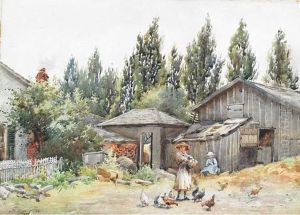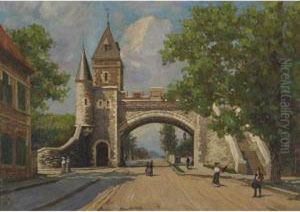Charles Macdonald Manly Paintings
Charles Macdonald Manly was a pivotal figure in early aviation history, best known for his contributions as an engineer rather than a traditional artist. Born in 1876, Manly's work primarily revolved around the development of engines for early aircraft, significantly impacting the progress of aviation technology during the late 19th and early 20th centuries. His most notable achievement was the design and construction of the Manly-Balzer engine, which was intended to power Samuel Langley's Aerodrome, one of the first attempts to create a powered aircraft.
Although Langley's Aerodrome project failed to achieve sustained flight, Manly's engineering skills and innovative engine designs laid foundational work for future advancements in aviation. After the unsuccessful attempts with the Aerodrome, Manly continued to work in the field of engineering, contributing to the development of both aeronautical and marine engines.
Despite his significant contributions to early aviation technology, Charles Macdonald Manly is not as widely recognized as other pioneers in the field such as the Wright brothers. However, his work remains an essential part of the history of engineering and aviation, showcasing the importance of technological innovation in the early stages of powered flight.
Manly's career was cut short by his untimely death in 1927. His legacy, though often overshadowed by more famous contemporaries, is preserved in the annals of aviation history, highlighting his role as a key innovator and engineer during a critical period of technological advancement. Through his contributions to engine design and his involvement in early flight experiments, Manly played a crucial role in the development of aviation, making him a significant, albeit underappreciated, figure in the history of flight.
























